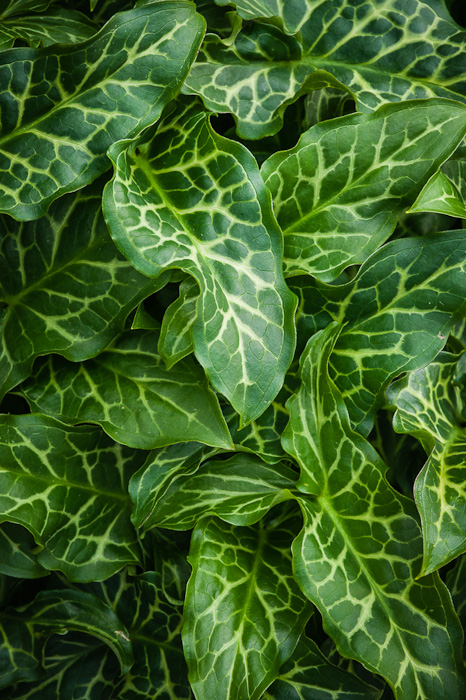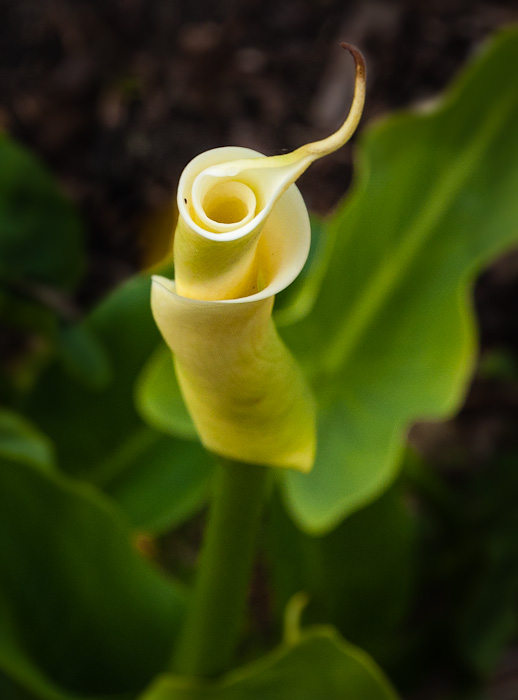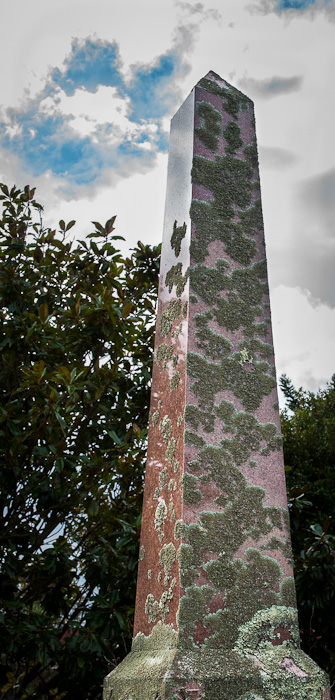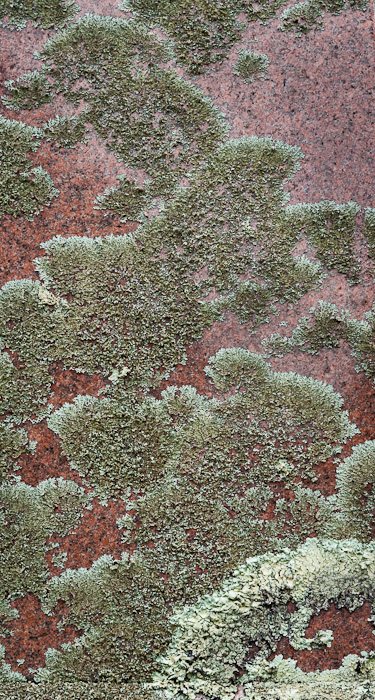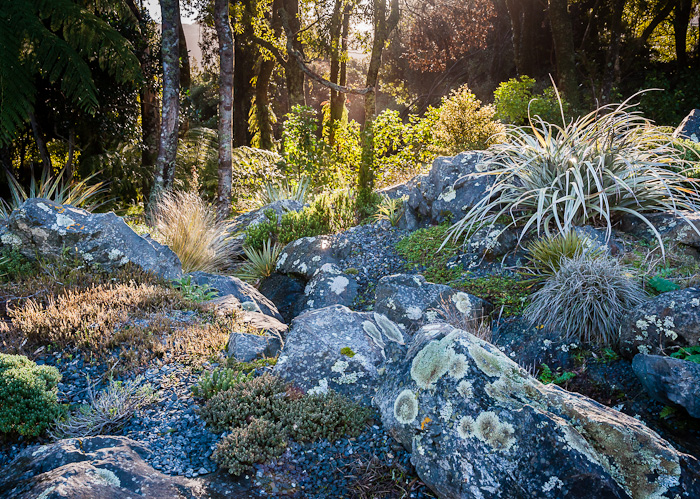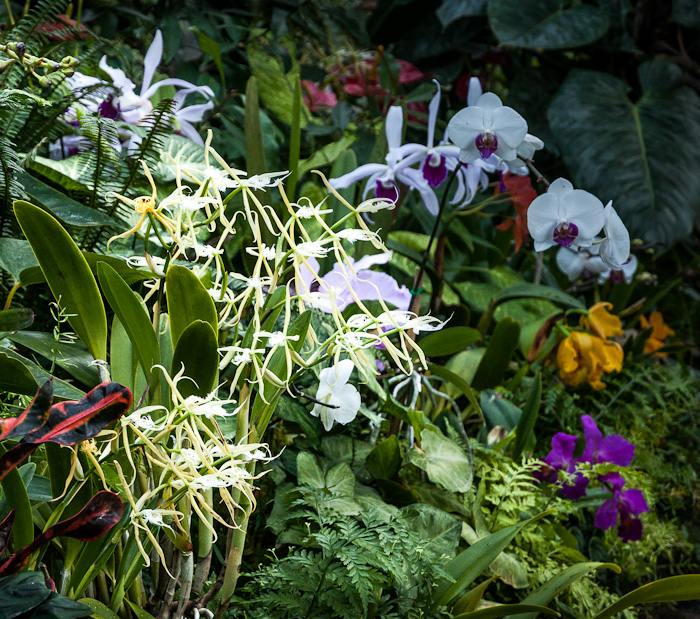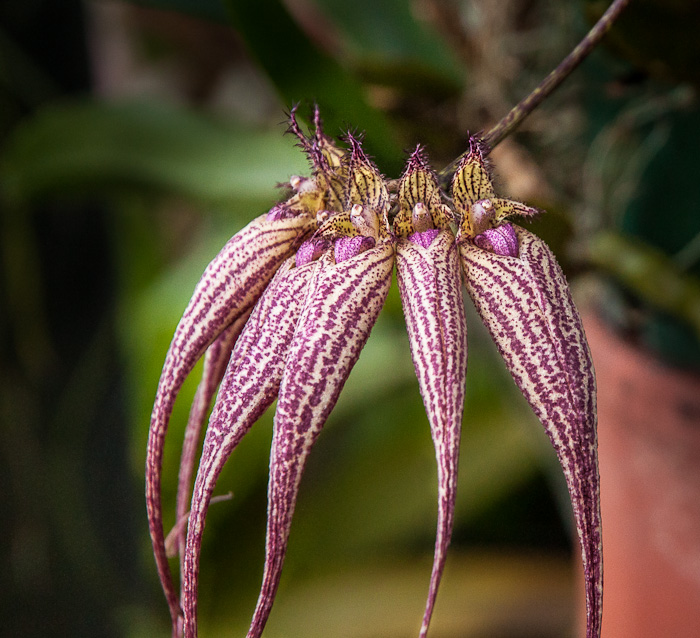The severe southerly storm on 21 June hit Wellington's south coast pretty hard. This video taken by a photographer from NIWA (the National Institute of Water and Atmospheric Research) gives some idea of what it was like.
Usually time passes and evidence of storms fades quite quickly. But this time it isn't like that. The glossy green leaves of taupata (Coprosma repens) are tough and resilient to salt and wind. Taupata plants grow happily down on the seawall and along the coast, their rich green most attractive on bleak winter days. But on a sunny day, weeks after the storm, there wasn't quite so much of the green...
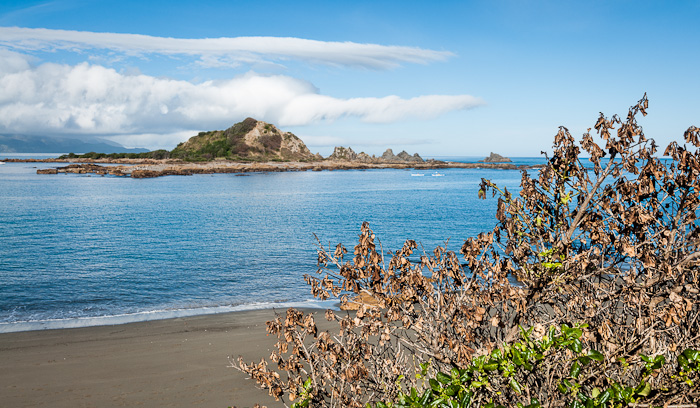
I have never seen so much leaf damage on taupata before.
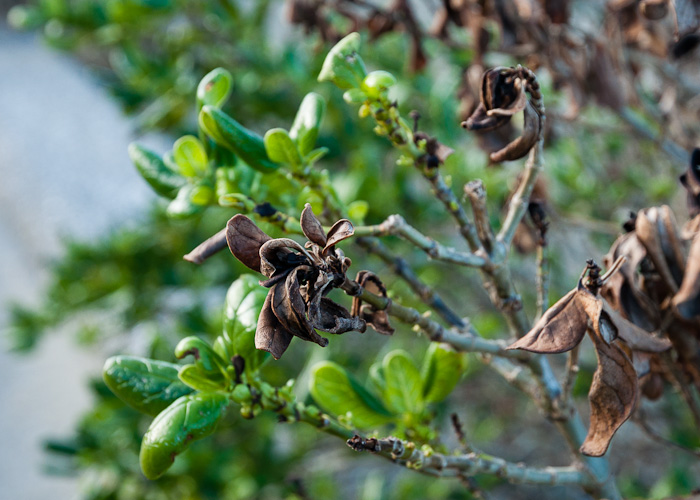
The shrivelled brown dead leaves contrast with the live leaves - still glossy and green, but also somewhat shrivelled and battered compared to their usual perky selves.
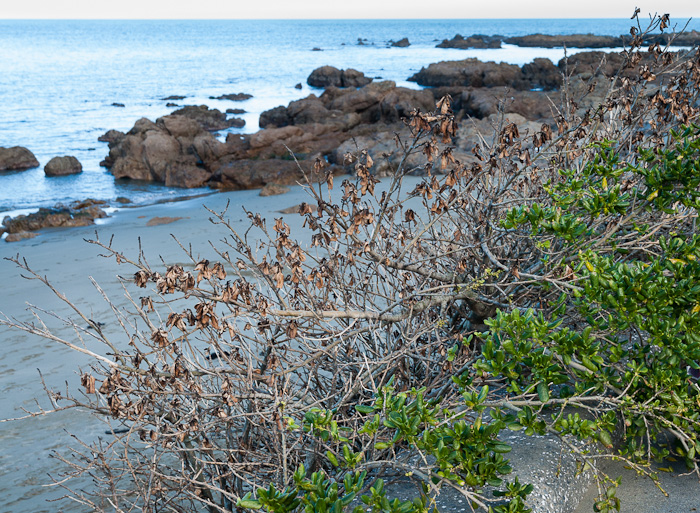
The parts of the bushes most exposed to the salt-laden gales look dead, the parts that got a bit of shelter held on to life. You can see the direction of the wind in this pattern of death, not just at the coast but far inland. Even the tough plants on the island show the changes...
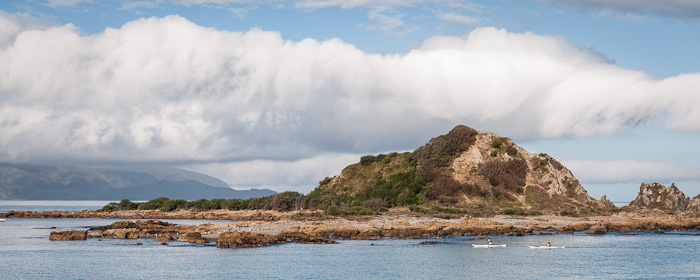
Vegetation on Taputeranga - browning and areas of death, with a bit more green where there was shelter from the gales. A peaceful sunny day when two kayakers can enjoy the water. But to me the damage is a reminder. Let's think about global climate change and the more dramatic weather events it is bringing and how our future is worth more than the laggardly action/inaction that our leaders are showing.

